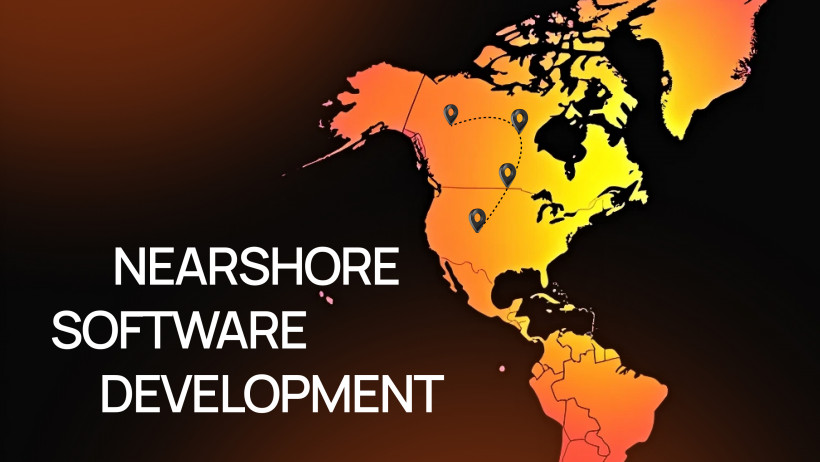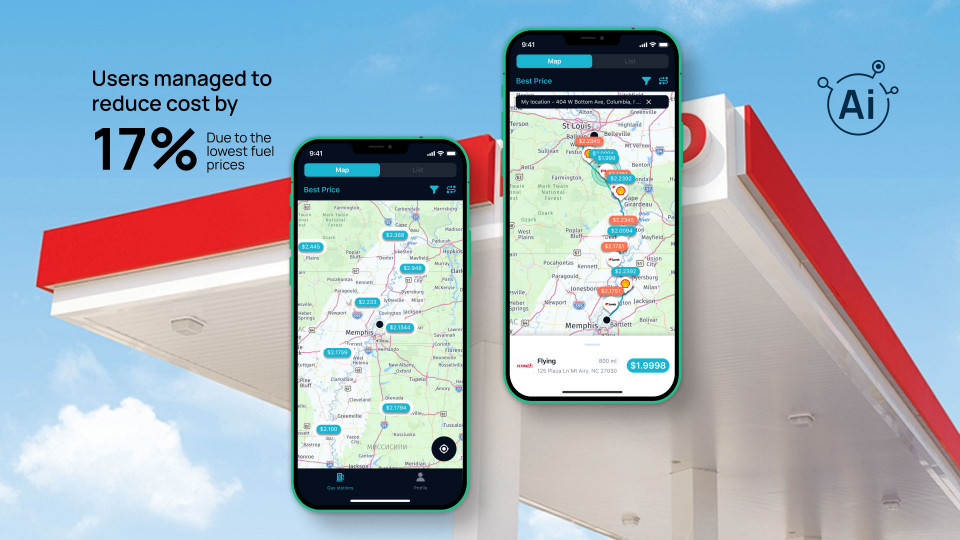Offshore outsourcing used to be the go-to option for many U.S. companies looking to save money on development. But over time, the cracks began to show — communication breakdowns, long delays caused by time zone differences, and cultural misunderstandings that slowed projects to a crawl. What looked like a cost-effective decision often ended up draining both time and energy.
That’s where nearshore IT services change the game. By working with LATAM development teams and other nearby partners, U.S. businesses can keep the benefits of outsourcing (like cost savings and access to skilled talent) without the common offshore headaches. Nearshore software teams offer not just proximity, but real-time collaboration and cultural compatibility that make day-to-day work smoother and more productive.
In the next sections, we’ll look at how nearshore development services work, why they’re becoming a smarter alternative, and how to choose the right partner for long-term success.
What Is Nearshore Software Development?
It’s a model where companies outsource their software projects to service providers located in nearby countries, often sharing the same or similar time zones. For U.S. businesses, this typically means partnering with LATAM development teams in countries such as Mexico, Colombia, Argentina, Brazil, or Costa Rica.
This approach is a middle ground between onshore (same country) and offshore (distant countries, usually with a large time zone gap). It combines the cost-efficiency of outsourcing with the accessibility of closer collaboration.
In practical terms, nearshore outsourcing can look like:
- A U.S. SaaS startup working with developers in Mexico for faster MVP development.
- An enterprise-level company augmenting its internal team with specialized engineers from Colombia.
- A growing e-commerce brand building a cross-functional Agile team in Argentina to handle continuous feature updates.
Beyond geography, what defines software development nearshore is the relationship model: teams work during overlapping hours, share similar business cultures, and communicate in a way that minimizes misunderstandings. This alignment makes it easier to adopt Agile practices, keep iteration cycles short, and respond quickly to changing requirements.
Unlike offshore partners, nearshore teams can hop on a real-time call during your lunch break, adjust a feature in the afternoon, and deliver a working update before the end of your business day. That speed and synchronicity are often what turn nearshore technology solutions into a long-term strategic advantage.
Benefits of Nearshore Development
The appeal of software development nearshore isn’t just about being “closer” geographically. It’s about creating the kind of work environment where ideas move faster, communication feels effortless, and deadlines are easier to hit. Let’s break down the main benefits and see how they play out in real business scenarios.

1. Same or Similar Time Zones
One of the most significant advantages is time zone alignment. While working with offshore teams can mean an 8–12 hour gap, nearshore partners operate within one to three hours of U.S. time zones.
Why it matters:
- Your morning meeting can lead to immediate action instead of waiting until the next day.
- Urgent bug fixes can be addressed in hours, not days.
- Project handovers happen in real-time, reducing the risk of missed details.
Example: A fintech company in Texas collaborating with a team in Costa Rica schedules daily stand-ups at 10 a.m. Both teams are online, reviewing yesterday’s progress and assigning new tasks without anyone sacrificing their work-life balance.
2. Cultural and Language Alignment
Cultural compatibility is an underrated factor in project success. With nearshore IT services in LATAM, business practices, work ethics, and even humor often align more closely with U.S. norms than with distant offshore destinations.
Many developers in these regions have studied or worked in the U.S., and English-speaking developers are common, which minimizes language-related misunderstandings.
Example: A retail tech company working with a Mexican development team notices that requirements are understood the first time around: no repeated clarifications needed, and cultural nuances in marketing features are quickly grasped.
3. Real-Time Collaboration
When both teams share similar working hours, real-time collaboration becomes the default. That’s crucial for Agile methodologies, where quick feedback loops drive project momentum.
On the ground, this means:
- Holding spontaneous brainstorming sessions without worrying about time zones.
- Reviewing code together in live sessions.
- Rapidly iterating on prototypes without bottlenecks.
Example: A healthtech startup in California tests a new dashboard design with its nearshore developers in Colombia. Feedback from beta users in the morning is implemented and ready for review by the afternoon — keeping release cycles fast and competitive.
4. Lower Costs Than In-House
While nearshore outsourcing is rarely as cheap as some offshore options, it offers a better cost vs quality balance. You save on salaries, benefits, and infrastructure while still accessing senior-level talent.
Example: A U.S. logistics company needs to expand its mobile app but doesn’t want to commit to hiring six full-time developers onshore. By partnering with a nearshore provider in Argentina, they get the expertise they need at 40% lower cost than local hires.
5. Access to Highly Skilled Developers
LATAM is becoming a tech talent hotspot. From AI specialists to cloud architects, software development nearshore partners bring a wide range of expertise to the table. Many have experience working with international clients and are comfortable with Agile nearshore team dynamics.
Example: A cybersecurity firm in New York taps into a nearshore partner in Brazil to develop a machine-learning threat detection module. The developers not only deliver the project but also suggest enhancements that improve accuracy and reduce false positives.
Nearshore vs Offshore vs Onshore: Key Differences
When deciding between nearshore, offshore, and onshore development models, cost is often the first factor that comes to mind. But in reality, the choice affects every aspect of your project: from delivery speed to communication quality and overall satisfaction.
Here’s a breakdown of the core differences:
| Feature | Nearshore | Offshore | Onshore |
|---|---|---|---|
| Time Zone Overlap | High — work hours align closely | Low — often 8–12 hours difference | Full — same working hours |
| Communication Ease | High — cultural & language fit | Medium — possible language gaps | Very high |
| Cost | Moderate — lower than onshore | Lowest overall | Highest |
Use Cases Where Nearshore Makes Sense
1. Agile Development
Agile nearshore teams thrive on quick feedback loops and frequent updates — something difficult with offshore delays.
2. MVPs and Prototypes
When speed to market matters, real-time collaboration ensures faster iterations and testing.

3. Long-Term Product Evolution
Products that require ongoing development benefit from communication efficiency and stability in the team.
4. Staff Augmentation
Need to scale quickly? Nearshore outsourcing solutions let you add skilled developers without the long recruitment cycle.
Challenges to Plan For
No model is perfect. Here are a few things to prepare for:
- Legal/Compliance Across Borders
Regulations can differ from country to country, even within the same region. Ensure your contracts cover IP protection, align with data privacy laws like GDPR or CCPA, and clearly define payment terms and dispute resolution processes. Consulting a legal expert familiar with cross-border tech agreements can save you from costly mistakes later. - Vetting Partners Carefully
Not all providers are created equal. Beyond a sleek website, check for proven track records, detailed case studies, client references, and relevant technical certifications. A trial project or pilot phase can also help you evaluate their skills, responsiveness, and ability to integrate with your workflow. - Cultural Differences Still Exist
Nearshore often means fewer cultural gaps than offshore, but subtle differences in work styles, hierarchy, or communication tone can still arise. Setting shared expectations early, offering thorough onboarding, and encouraging open feedback channels can keep collaboration smooth and productive.
How to Choose the Right Nearshore Partner
Here’s a quick checklist to help you make an informed decision:
What to Look For
- Strong portfolio and case studies: ideally in your industry or with projects similar in scope and complexity.
- English-speaking developers: to ensure smooth day-to-day collaboration without misunderstandings.
- Clear project management methodology: Agile, Scrum, or another structured approach that fits your workflow.
- Transparent pricing: with no hidden fees, clear hourly rates or fixed costs, and agreed payment terms.
- Positive client testimonials: from verified sources or direct references you can contact.
Red Flags
- Vague answers about team composition: not knowing who exactly will work on your project can signal instability.
- No clear communication channels: absence of regular meetings, project dashboards, or dedicated contact points.
- Lack of security protocols: no defined approach to data protection or IP security.
- Limited experience in your industry: may lead to a longer learning curve and missed nuances in your project.
Final Checklist Before You Sign

- Does the partner have relevant experience with your type of project?
- Are they consistently responsive during your business hours?
- Do they show a clear understanding of your market, culture, and end users?
- Have you verified their legal, compliance, and data protection readiness?
- Have you reviewed a sample contract or NDA to ensure your interests are protected?
Conclusion
Nearshore software development offers a unique balance of quality, collaboration, and cost-efficiency that traditional offshore models often struggle to deliver. With time zone alignment, you can schedule meetings and resolve issues in real time. With cultural proximity, you reduce misunderstandings and speed up decision-making. And with access to highly skilled talent, you don’t have to compromise on technical expertise to save money.
For many U.S. companies, this shift isn’t just about cutting costs, it’s about building stronger, more agile teams that can respond quickly to market demands. By removing the communication delays and operational friction common in offshore outsourcing, nearshore development enables faster delivery, smoother collaboration, and more predictable outcomes.
If you’re ready to boost delivery speed, strengthen teamwork, and avoid the pitfalls that have slowed projects in the past, now is the perfect time to explore nearshore development services. It’s not just a smarter outsourcing choice it’s a long-term growth strategy.


